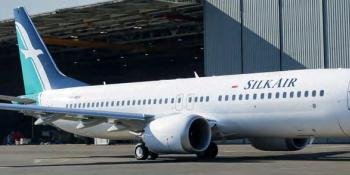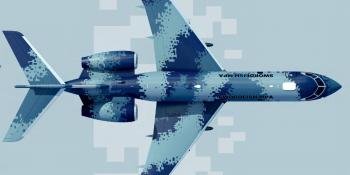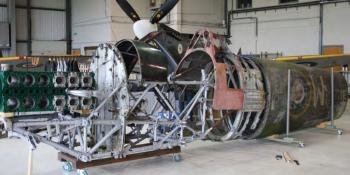
the Flying-V concept.
KLM Royal Dutch Airlines is working with the Faculty of Aerospace Engineering at Delft University of Technology (TU Delft) researching a concept called the Flying-V.
The concept is for a v-shaped flying wing in which the passenger cabin, cargo hold and fuel tanks are integrated. The concept is for an aircraft 55m (180ft) long, 17m (55ft) in height and with a 65m (213ft) wingspan, holding 314 passengers, 160m3 (5,630ft3) cargo capacity, and 140,000 litres (30,795 Imp gallon) of fuel.
TU Delft says the Flying-V’s aerodynamic shape and reduced weight will mean it uses 20% less fuel than an Airbus A350- 900, the aircraft that forms the baseline comparison for the project. The Flying-V has the same wingspan, passenger capacity and cargo volume as the A350-900, which TU Delft says would enable the aircraft to use existing airport infrastructure.
The Flying-V is being is being designed with current-generation turbofan engines and the university says: “It can easily be adapted to make use of innovations in the propulsion system, by using electrically boosted turbofans, for example.” Researchers say the Flying-V also provides an opportunity to reimagine cabin design.
Studies into the Flying-V have been underway for several years, an early version of the concept first being presented at the Technical University of Berlin. A scale model was built to demonstrate the concept’s aerodynamic characteristics and undertake simulations to support research work. Airbus filed a patent application for the design in 2015.
TU Delft has since conducted further research into its aerodynamics, structure, airframe-engine integration, cabin design and, most recently, expected flight characteristics. In publicly available documents on the university’s website, TU Delft says three different wind tunnel campaigns have been carried out at its Open Jet Facility, acquiring data through balance measurements and flow visualisation techniques, to study specific aerodynamic characteristics such as stability, angle of attack and lift-to-drag ratio.
This research work has informed the development of subscale models. TU Delft says a scale model of the concept will fly this year, with a full-size section of the interior set to be offcially presented at the KLM Experience Days at Schiphol in October, coinciding with KLM’s 100th anniversary.
Mark Broadbent





